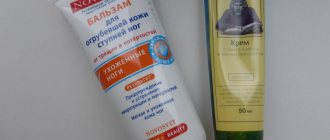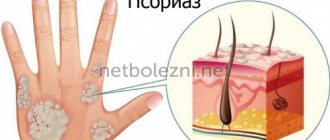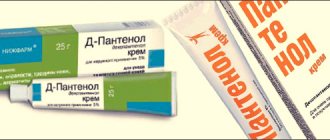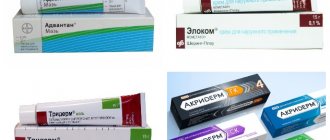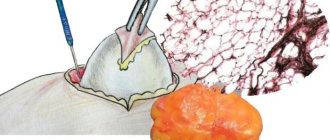Systemic drugs
If local treatment for facial dermatitis does not help or the inflammation is too severe, your doctor may prescribe antihistamines and/or hormonal medications for internal use.
Antihistamines
Second, third and fourth generation antihistamines are usually prescribed. They are well tolerated and do not cause drowsiness or other serious adverse reactions. The effect of the drugs lasts 24 hours, so they are taken once a day. This group includes tablets, drops and capsules for oral administration based on:
- dimethindene (Fenistil);
- loratadine (Loratadine, Alerpriv, Lomilan, Clarifer, Claritin, Clarisens, Erolin);
- ebastine (Kestin);
- fexofenadine (Fexofast, Telfast, Fexadine);
- cetirizine (Cetrin, Zodak) and levocetirizine (Glenset, Cesera, Suprastinex, Alerzin);
- desloratadine (Erius, Lordestin).
Antihistamines treat not only allergic dermatitis on the face, but also other types of inflammatory processes. These medications alleviate the unpleasant symptoms of inflammation: they have a pronounced decongestant effect, reduce itching and flaking, and prevent further spread of skin rashes.
Hormonal
Corticosteroids are potent drugs. They have a powerful anti-inflammatory effect, instantly eliminate itching, swelling, and help quickly cure dermatitis on the face.
However, the drugs have a lot of contraindications and can cause serious adverse reactions from various organs and systems of the body. Therefore, hormonal drugs are prescribed only when the rash spreads rapidly or the disease is severe, when it is not possible to control the inflammation with other medications. Treatment with systemic hormones is usually carried out in short courses (on average 5 days), only on the recommendation and under the supervision of a doctor.
Usually prescribed:
- Prednisolone;
- Dexazone;
- Dexamethasone;
- Megadexane;
- Fortecortin.
The pharmaceutical market offers a huge list of effective drugs for dermatitis. However, the results of therapy directly depend on the correct choice of medications. Therefore, if unpleasant symptoms appear, you should consult a doctor. Based on the results of analyses, provocative tests and allergological tests, a specialist will be able to determine the exact cause of the inflammatory processes and will tell you what to apply to the skin and what products to take orally so that the inflammation goes away as soon as possible and does not worsen.
Clinical researches
La-Cri creams for sensitive skin and La-Cri cream for dry skin are recommended by the St. Petersburg branch of the Union of Pediatricians of Russia.
The conducted clinical study proves the high efficiency, safety and tolerability of products for daily skin care of children with mild and moderate forms of atopic dermatitis and during remission, accompanied by a decrease in the quality of life of patients. As a result of therapy, a decrease in the activity of the inflammatory process, a decrease in dryness, itching and flaking was noted.
Sources:
- Tulchinskaya, V.D. Nursing assistance to children / V.D. Tulchinskaya. — Moscow: Russian State University for the Humanities, 2016.
- Andropova T.V., Gudina M.V., Odintsova I.N., Hygiene of children and adolescents, Siberian State Medical University Publishing House, 2022.
- Reken Martin, Schaller Martin, Sattler Elke, Burgdorf Walter, Atlas of Dermatology, MEDpress-inform, 2022.
Photos of dermatitis
Photo album on the disease
Diet for neurodermatitis
During treatment, it is recommended to exclude the following foods:
- Which can provoke an additional allergic reaction: milk, nuts, honey, eggs, grapes, berries, citrus fruits, caviar.
- Containing histamine: bananas, tomatoes, spinach, seafood and fish, spicy cheese, sauerkraut.
- Promoting the release of histamine: chocolate, pineapple, soy, alcohol, spices and seasonings.
- With a high level of nitrogen-containing substances that provoke skin allergic inflammation. These are offal, asparagus, legumes, coffee, smoked meats.
- Digestive tract irritants: horseradish, radish, mustard, radish, vinegar essence.
What is dermatitis and the causes of its occurrence?
Dermatitis is a set of inflammatory processes that damage the skin in various locations. The disease is caused by the influence of multiple chemical and physical irritants on the skin.
The cause of the disease may be:
- metabolic disorder;
- hormonal imbalances;
- gastrointestinal problems;
- congenital or acquired predisposition to allergies;
- increased susceptibility to certain medicinal groups and products;
- frequently recurring infectious diseases.
To treat dermatitis, first determine its type, the stimulus for its occurrence, the patient’s age group, and his chronic diseases. Each treatment begins with determining the cause of skin reactions, as well as eliminating allergens
In the general course of treatment, the use of external medications plays an important role. Creams, ointments, lotions are quite effective for rashes on the face, arms and legs
Their use is indispensable in the treatment of dermatoses.
Examples of effective creams
List of some drugs with corticosteroids in the form of ointments:
- Advantan. The active element of the drug is methylprednisolone aceponate. Used as an antiallergic, anti-inflammatory and antipruritic agent for various types of dermatitis, including infectious. Available in the form of a viscous emulsion of white or transparent color with a specific odor. Apply once a day for 12-13 weeks, and for children no more than a month. Stores for 2 years at room temperature. The price ranges from 550 to 600 rubles.
- Beloderm. The active substance of the drug is betamethasone. It is used for psoriasis, itching, various types of dermatitis and lichen. It also has antiviral, vasoconstrictive, antipruritic and antiallergic effects. It is prohibited to use for tuberculosis. Side symptoms are usually not dangerous to health. Used twice in one day for no more than a month. Can be stored for three years at room temperature. Cost from 130 to 150 rubles.
- Hydrocortisone. The active substance is the same as the name of the drug. Has anti-edematous and anti-inflammatory effects. Hydrocortisone-based ointment is used for dermatitis and psoriasis. It helps especially well with various microbial diseases. An eye ointment that should not be used by those who are hypersensitive to this active substance. Apply 2-3 times a day for about 2 weeks. Stored for two years at below room temperature, preferably in a pantry or on the balcony. Cost 30-50 rubles.
- Kuterid. The active ingredient is betamethasone. It has the same properties as its analogue, in addition to an antibacterial effect. Used for dermatitis, herpes, prickly heat, urticaria. It is stored for three years. Price 130-200 rubles.
- Lokoid. The main substance is hydrocortisone butyrate. It has antipruritic, anti-inflammatory and anti-edematous effects. Prescribed for dermatitis. The surface area of application of the product should not exceed 30%. Stored for 3 years. Price 350-400 rubles.
- Sinalar. The most important substance is fluocinolone acetonide. Provides anti-inflammatory effect. Used for lichen, rubella, lupus, dermatitis, psoriasis. It is necessary to smear 2 or 3 times a day, the shelf life is not limited at normal temperatures. The cost is about 300 rubles.
- Flucinar. Fluocinolone acetonide is the key substance. Antiallergic and anti-inflammatory agent. Prescribed for dermatitis and lichen. It is stored for about 60 months. You can buy it in pharmacies from 200 rubles.
- Celestoderm. The key substance is betamethasone. A vasoconstrictor and anti-inflammatory agent that is used for various types of dermatitis, itching, allergies, diaper rash and urticaria. This is a white cream with a thick, uniform structure. It is stored for about five years. Most pharmacies provide a cost of 250 and no more than 400 rubles.
The list with the names of corticosteroid hormonal ointments and creams is wider. The listed drugs are distributed throughout the Russian Federation.
There are preparations for lactating women based on phytohormones. But the doctor prescribes such medications strictly for the general health of the mother and newborn child, because the immune system may not be strong enough for the existence of such substances in the body.
For children, there are local corticosteroids, the names of which are given above, but the amount of application and duration of treatment differs to a lesser extent. If irritation occurs after the ointment, you should soothe your child's skin with chamomile-based herbal baths, which help reduce redness and itching.
https://youtube.com/watch?v=R-mBL9av8VE
Allergic dermatitis cream
This form of the disease occurs as a result of human contact with an allergen - chemical, food, drug, etc. The disease is characterized by dry and itchy skin, the appearance of flaky, reddened areas, and the formation of papules and blisters. Most often, the rashes are localized on the hands and face.
Treatment involves stopping contact with the allergen and using antihistamines. As for the choice of cream for dermatitis on the hands and face, it depends on the intensity of the symptoms, age and general health of the patient. For mild forms of the disease, remedies based on string, chamomile, violet, menthol, and ichthyol are prescribed. The use of calcineurin inhibitors may also be recommended. If we are talking about a severe form of allergic dermatitis, the use of methylprednisolone aceponate, hydrocortisone acetate, betamethasone dipropionate may be required.
Non-hormonal creams and ointments for dermatitis
This group of drugs has a mild effect on the skin, but is no less effective. Most often, non-hormonal drugs are prescribed for the treatment of dermatitis in children.
Bepanten (analogues of D-Panthenol, Pantoderm)
The mild action drug is intended to eliminate dry skin during dermatitis of various origins. It is also prescribed for the care of the face and hands as protection against external irritants (snow, wind, sun, rain).
Suitable as a treatment for diaper dermatitis in newborns, eliminates diaper rash, cracks and abrasions, as it promotes better regeneration of skin tissue in adults. In Russia, the price for 1 package varies from 120 to 500 rubles.
Eplan
A cream intended for the treatment of psoriatic plaques, ulcerative rashes, fissures and microbial eczema. Also used for acne, herpes, burns. The drug perfectly relieves inflammation, itching due to dermatitis, as well as insect bites.
The cream can be used to prevent exposure to chemical irritants. Price for 1 package in Russia from 140 to 160 rubles.
Skin Cap
The drug is available in the form of ointment, gel, aerosol, shampoo. The product has antifungal, antimicrobial and anti-inflammatory effects. Used in the treatment of atopic, diaper and seborrheic dermatitis, as well as neurodermatitis, eczema and psoriasis.
Skin-Cap cream is the leader among ointments for dermatitis, and at the same time has a safer effect. However, there is an opinion that the composition includes a powerful glucocorticosteroid, which is not indicated in the description. Price for 15 g – 650 rub.
Radevit
This non-hormonal ointment is used for atopic, allergic, contact dermatitis. Also used as a treatment for eczema, eliminating cracks and skin erosions. The ointment has anti-inflammatory and reparative effects, relieves itching, dryness, restoring the protective function of the skin. The average price per tube is 320 rubles.
Gistan
Not to be confused with a drug of a similar name - Gistan-N, which is a hormonal agent. Gistan ointment is applied topically. The drug contains extracts of medicinal herbs, which provide a gentler effect on the skin.
Gistan is used as a treatment for atopic dermatitis, eczema, and neurodermatitis. Has anti-inflammatory and anti-allergic effect. Also used for insect bites. The average price is 150 rubles.
Ichthyol ointment
Excellent fight against dermatitis. Has a powerful absorbing effect. It should be clarified that the ointment does not have a good anti-inflammatory effect, but despite this it eliminates dermatitis well, relieving itching and flaking of the skin.
Thymogen
The cream belongs to the class of immunomodulators. Perfectly relieves itching and quickly eliminates redness. Thymogen has shown effective results in the treatment of atopic dermatitis and chronic eczema.
This cream should be used with extreme caution when treating children. By the way, absolutely any immunomodulator should be used only as prescribed by the attending physician
The price varies from 250 to 300 rubles. per package.
Tsinocap
The drug is available in the form of a cream. The main active ingredient is zinc pyrithione. The cream has anti-inflammatory, antifungal and antibacterial effects. Used as a treatment for atopic, seborrheic dermatitis, psoriasis. In Russia, the price for 1 package varies from 280-330 rubles.
Cream "Zorka"
The cream contains a complex of natural biologically active substances – Floralizin. The drug promotes better biosynthesis, metabolism, and skin nutrition. The cream moisturizes the skin well, promoting faster healing of abrasions and wounds.
Despite the fact that the cream is intended for veterinary needs, it is used as a treatment for skin diseases - herpes, dermatitis, psoriasis, eczema and even varicose veins. The cream can be purchased at veterinary pharmacies, the price is 60 rubles. An analogue of this cream “Forest Power”, intended for people, the price of which is about 500 rubles.
Cream for diaper dermatitis
Diaper dermatitis is a common problem occurring in infancy. It appears as a result of non-compliance with hygiene rules, insufficient removal of excrement residues from the skin in the anogenital area of the baby, irrational use and rare changes of diapers, and excessive sweating of the baby. This type of disease can affect not only children, but also adults who are forced to wear diapers - the elderly and bedridden patients.
To reduce the symptoms of this type of disease, non-hormonal children's remedies for dermatitis are usually prescribed - for example, with zinc, panthenol, and plant extracts. To prevent the appearance of diaper dermatitis, you can use La-Cri diaper cream. It contains zinc oxide, panthenol, shea and jojoba butters, beeswax and licorice extract.
If an infection joins the rash and inflammation begins, antimycotics and antibiotics are prescribed.
Non-hormonal ointments and creams
Ointments that do not contain hormones have a milder effect, but are quite effective in the treatment of dermatitis. You can use them for a long time without risking your health. In pediatrics, treatment of eczema, dermatitis or other skin diseases is carried out mainly with external preparations.
Commonly used drugs:
- Eplan.
- Bepanten.
- Skin - Cap.
- Exoderil.
- Happy.
- Gistan.
- Elidel.
- Protopic.
- Fenistil.
- Losterine.
- Thymogen.
- Naftaderm.
- We see.
All these drugs are divided into categories according to their effect on the skin.
Antiseptic ointments:
- Dermatol.
- Furacilin.
- Dioxidin–Bepanthen+.
Ointments containing antibiotics are Erythromycin, Levomikol and Levosin.
Ointments and gels that suppress itching conditions and replenish, antihistamines that also alleviate allergic manifestations:
- Ichthyol.
- Fenistil.
- Zinc.
- ACD 5%.
- Elidel - used for the whole body.
Ointments that promote healing and recovery, including vitamin A:
- Actovegin.
- Bepanten.
- Solcoseryl and methyluracil ointments, widely used to treat contact dermatitis.
Products for moisturizing and softening the skin:
- Baby creams.
- We see.
- Keratolan.
Treatment with ointments without hormones lasts quite a long time. It is not recommended to discontinue use (only with the permission of the attending physician) before the painful lesions on the skin completely disappear.
Correct technique
Treatment should begin with much milder medications.
Only after several weeks, when a positive result is not registered, do they switch to potent drugs. Treatment should be completed with drugs with a more gentle effect. Ointments are applied to previously cleansed, dry skin. Apply without rubbing movements so as not to damage the diseased areas of the body. In case of manifestation of dermatitis on the scalp, the choice of drug should be stopped at special lotions.
If the patient's condition worsens or signs of infectious diseases are observed, treatment should be stopped and a doctor should be visited. Allergic skin reactions caused by antibiotics should not be treated with antihistamines.
Disadvantages of non-hormonal drugs in the treatment of dermatitis of various complications. Allergic reactions caused by these drugs are possible. Treatment with such drugs does not always provide the expected result, since they are intended to moisturize, soften, and nourish the skin. And types of dermatitis, such as contact and allergic, are difficult to cure only with external means.
Dermatitis is often treated with additional antibiotics. Antihistamines are prescribed for the complex treatment of dermatitis on the face, limbs, and so on. It must be remembered that only a professional medical examination can guarantee correct and complete treatment of the disease.
Seborrheic dermatitis cream
Seborrheic dermatitis usually affects areas of the body that have a large number of sebaceous glands. One of the most unpleasant signs of this type of disease is that it is often localized in exposed areas of the body. This causes a person not only physical, but also psychological discomfort. Therefore, it is very important to pay special attention to choosing a suitable cream for seborrheic dermatitis on the face (especially in the nasolabial triangle), scalp, neck and other affected areas.
The cause of seborrheic dermatitis is infection of the skin by yeast-like fungi Malassezia, so external antimycotics (antifungal drugs) are prescribed to combat the disease. For treatment, external agents based on ketoconazole, fluconazole, and clotrimazole are used. Another task, in addition to normalizing the skin microflora, is to ensure rapid exfoliation of scales and normalization of sebum (sebum) production.
Hormonal ointments
Topical corticosteroids are among the most commonly recommended drugs in dermatological practice. This is due to their ability to quickly relieve symptoms of many skin diseases, including allergic dermatitis. Corticosteroid ointments for dermatitis must be selected based on a number of factors - the intensity of the inflammatory process that caused allergic dermatitis and its localization, the size of the skin involved, age, since these ointments for treating skin have side effects if used incorrectly.
Local glucocorticosteroids have different activities and are divided into four or seven groups according to different classifications:
- In many countries of continental Europe, experts distinguish four groups of drugs depending on the strength of the active substance. Class 4 drugs are the strongest, these include clobetasol propionate (Dermovate) and betamethasone dipropionate (Akriderm, Beloderm, Betamethasone, Betnovate). Weak class 1 drugs include hydrocortisone.
- The World Health Organization has adopted a classification dividing local glucocorticosteroids into seven classes. The division is based on their ability to constrict small blood vessels. The transport form of the drug is taken into account, since a steroid in the form of an ointment at the same concentration will be stronger than a lotion or gel. Class 1 drugs (diflorazon diacetate 0.05% ointment - “Psorkon”) are the most active, approximately 600–1000 times stronger than hydrocortisone ointment 1%, which belongs to class 7.
In general, low-potency steroids are the safest for long-term use on large areas of skin, the face or areas of thin skin, and in children. Strong remedies are useful for persistent and severe cases of allergic dermatitis, as well as for thick skin on the palms and soles. Most active corticosteroids should not be used on the face, groin, armpits, or under occlusive dressings except in particularly severe cases.
Strong steroid drugs should be used for several days, no longer than 1-2 weeks. After reducing inflammation, you need to switch to weaker topical steroids. Strong creams and ointments are used 1-2 times a day, weaker ones - up to 4 times a day. Hormonal products should be applied in a thin layer in moderate quantities, but the surface to be treated must be completely covered. If the skin is severely affected, glucocorticosteroids are applied after wet-dry dressings.
The most common forms of topical corticosteroids are creams and ointments:
- Allergic dermatitis ointment provides an occlusive effect and retains moisture in the skin, so it is most useful for treating dry, hard, flaky skin. In this case, the active substance penetrates most deeply and acts more effectively than in any other transport form. However, ointments should not be used on areas of hair growth, as this can lead to maceration and folliculitis, and on areas with high humidity and limited air flow.
- Allergic dermatitis cream has good lubricating properties, its ability to quickly absorb into the skin makes it cosmetically attractive. For acute exudative inflammation and in body folds, the use of creams is optimal, but they often contain preservatives that can cause irritation, burning and new allergic reactions.
Brief descriptions of popular ointments for dermatitis with hormones
Hydrocortisone ointment contains the active substance hydrocortisone - a glucocorticosteroid that has anti-allergic and anti-inflammatory effects. Available in the form of ointment and suspension for intramuscular administration. Hydrocortisone reduces capillary permeability and reduces the risk of developing an exudative reaction (formation of bubbles with liquid), and also inhibits scarring of the skin at the site of the lesion.
Lorinden A contains flumethasone (a synthetic glucocorticosteroid) and salicylic acid as active substances. Thanks to flumethasone, the drug eliminates swelling, itching and inflammation, and the salicylic acid included in its composition provides an antiseptic and keratolytic (softening keratinized fragments) effect, which helps deeper penetration of the composition into the skin. Lorenden A is usually used for dermatitis (not on the face!), accompanied by thickening of the epidermis, for example, with atopic dermatitis, as well as dermatitis caused by insect bites, photodermatitis and forms of the disease accompanied by the formation of blisters, not complicated by secondary infection. If infection does occur, you need to use Lorenden C, which contains clioquinol instead of salicylic acid - a substance with a pronounced antifungal, antimicrobial and bacteriostatic (inhibiting the growth of bacteria) effect
Prednisolone. The ointment contains the active substance prednisolone, which is a synthetic glucocorticosteroid. The ointment is used in the treatment of seborrheic, allergic and contact dermatitis, relieves inflammation and has antiallergic and antipruritic effects. In most cases, prednisolone prevents unwanted skin reactions and reduces capillary permeability, which determines the antiexudative effect of the drug. Prednisolone should not be used in children under one year of age, and pregnant women should use it only in emergency cases and for a short time.
Celestoderm-B is a hormonal ointment, the active substance is betamethasone. The glucocorticosteroid included in the product has an antihistamine and anti-inflammatory effect, it is effective in the treatment of contact, seborrheic, venous, solar, radiation and intertriginous (diaper rash) dermatitis. A combination drug, Celestoderm B, with garamycin (a broad-spectrum antibiotic) is commercially available, which is usually used when bacteria, such as staphylococci, have entered the affected area.
Elokom is an ointment effective for the treatment of seborrheic and atopic dermatitis, based on the potent synthetic glucocorticosteroid mometasone furoate. It has a vasoconstrictor, antiexudative and anti-inflammatory effect. Elokom is a potent drug; as a rule, it is used if other formulations do not help relieve swelling, itching and inflammation. For children, if necessary, the drug can be used from the age of two, and for pregnant women - only under the supervision of a doctor.
Advantan. This hormonal ointment (the active ingredient is the glucocorticosteroid hormone methylprednisolone) is widely advertised and really quickly relieves inflammation and relieves all manifestations of allergies. The product helps with allergic, atopic and contact dermatitis, including those caused by the characteristics of a person’s professional activity. In addition, Advantan oily ointment is commercially available, which is produced on an anhydrous basis and is ideal for the treatment of dry dermatitis, prone to peeling and cracking of the skin.
Dermovate. The active substance is lobetasol propionate (glucocorticosteroid), thanks to which the drug used for local therapy reduces inflammation, relieves itching and swelling, and also inhibits the processes of granulation and infiltration of the skin. The drug is available in the form of an ointment (recommended for dermatitis accompanied by dryness, hyperkeratosis and thickening of the skin) and in the form of a cream - optimal for the treatment of weeping skin inflammations. Dermovate is a strong remedy, it is usually used if other, less active drugs have been ineffective.
La-Cri is your assistant in the prevention of dermatitis
La-Cri's non-hormonal products, made from natural, safe ingredients, are excellent for accelerating recovery and preventing this disease. For example, there are many positive reviews about the use of La Cree cream for dermatitis. The active components included in the La-Cri cream for dry skin provide delicate care for damaged skin:
- Natural hypoallergenic oils (wheat germ, jojoba and shea) provide skin nutrition, combat dryness and normalize water-lipid balance.
- Plant extracts (licorice and string) help cope with itching, redness and flaking.
- Beeswax perfectly softens and nourishes the skin.
What antihistamines are used in adults
Treatment of neurodermatitis is based on the use of antihistamines, the purpose of which is to reduce the allergic reaction.
Properly selected medications will help eliminate itching and reduce rashes. There are hormonal and non-hormonal drugs.
Hormonal
Hormonal drugs should be used with caution. Such products are prohibited during pregnancy and breastfeeding. To eliminate itching and rashes, dermatologists often prescribe ointments that quickly give positive results.
To eliminate itching and rashes, dermatologists often prescribe ointments that quickly give positive results.
Among them:
- Elokom. The ointment can effectively remove all manifestations of a dermatological disease. The product must be applied once a day.
- Fluorocort. It fights well against the main symptom of neurodermatitis – itching. The ointment is of synthetic origin. It should be applied only to the affected areas. It is recommended to use the ointment for no more than 30 days.
- Advant. Has a pronounced antibacterial effect. Quickly absorbs into the affected skin and relieves inflammation. Redness, itching, and swelling decrease after a few days of use. The ointment provides good hydration.
- Prednisolone. An effective antiallergic drug fights all manifestations of neurodermatitis. Use 1 to 3 times a day.
- Hydrocortisone ointment. Aimed at combating swelling, itching, rashes and inflammation. With proper treatment, it restores the affected layer of the dermis.
For dermatitis, it is also recommended to take tablets.
The most commonly prescribed are Fluticasone, Prednisolone, and Dexamethasone. The dosage and treatment regimen will be determined on an individual basis.
Non-hormonal
Before prescribing a hormonal drug to combat the signs of neurodermatitis, a specialist will first recommend taking a course of treatment with non-hormonal drugs.
Atopic dermatitis can be treated with the following ointments:
- Bepanten. Heals small wounds, moisturizes the skin and accelerates regeneration. Use 2 times a day. The ointment is approved for children and pregnant women.
- Gistan. A safe drug that is aimed at destroying pathogenic microorganisms and fighting inflammation. Apply to affected parts of the body twice a day.
- Tsinocap. The main purpose of the ointment is to eliminate the inflammatory process. Apply to the rash for one month 3 times a day.
The specialist may also prescribe antihistamine tablets. The most effective are Suprastin, Cetrin, Loratadine, Zyrtec, Telfast. Non-hormonal drugs are not addictive and have no significant side effects.
Choosing a cream for dermatitis on the face and body, depending on the type of disease
Dermatitis is divided into the following types:
- Atopic.
- Allergic.
- Seborrheic.
- Contact.
- Diaper.
These types of diseases have different symptoms and causes of occurrence. Therefore, there is no universal remedy for dermatitis that would be equally effective in treating all types of this disease. In each specific case, the dermatologist prescribes the drug to the patient individually.
Treatment with creams and ointments
Almost all skin diseases involve the use of local products, namely ointments. Let's do a short review.
Non-hormonal ointments
"Bepanten" - (based on panthenol). Regenerates and moisturizes the skin, healing ulcers and microcracks. Well suited even for newborns.
"Gistan" is a cream that has a calming effect. It soothes itching (especially at night) and eliminates flaking of the skin. Contains extracts of Sophora japonica and birch buds, as well as lavender oil and panthenol. Can be used to treat neurodermatitis in children from 2 years of age
When purchasing, pay attention to the name: Gistan N cream is hormonal.
"Skin Cap". The product has anti-inflammatory, antifungal and antimicrobial effects.
Epidel is a drug based on pimecrolimus, which is known for its ability to fight skin inflammation and relieve itching.
Children from 3 years old can use the cream.
"Eplan". It not only quells itching, but also has an analgesic effect. "Eplan" can be used not only for the treatment of neurodermatitis, but also for its prevention. It is almost not absorbed into the blood, so pregnant women can safely use it.
"Radevit." The ointment helps improve tissue regeneration, and also eliminates itching and softens the skin. There are contraindications: pregnancy and lactation.
One should not expect an immediate effect from the use of non-hormonal ointments. They are designed for long-term use.
Hormonal ointments
Now to how to treat neurodermatitis if the disease has become severe. When a thick crust has formed on the skin that bleeds and hurts when touched, more effective corticosteroid-based ointments should be used. Only a doctor can prescribe such products, and they must be used strictly as prescribed, without exceeding the amount of ointment and duration of use.
A dermatologist, depending on the complexity of neurodermatitis, can prescribe an ointment with varying degrees of activity.
- Prednisolone is a weakly active drug.
- "Ftorokort" - has moderate activity.
- “Apulein” – it contains substances of medium activity.
- Dermovate is a powerful corticosteroid.
Homemade ointment
- poultry fat (chicken, goose or duck);
- birch tar (sold in a pharmacy);
- beeswax (it’s better to take fresh, not last year’s).
Mix everything in equal quantities and place in a clay dish. Place a metal plate on a lit stove (a regular baking sheet will do) and place a container with the mixture on top.
Stir constantly. After boiling, remove the dishes from the baking sheet and cool the mixture. Apply the cooled ointment to areas affected by neurodermatitis 2-3 times a day.
Forms and complications of atopic dermatitis
Depending on your age, atopic dermatitis rashes may look different. There are infant, child and adult forms of the disease. In addition, there are currently two forms of atopic dermatitis depending on the presence of atopy - atopic and non-atopic.
In the atopic form, there is a connection between exacerbations with food, house dust allergens, and less often pollen. Other atopic diseases are often present: bronchial asthma, allergic rhinitis - both in the patient himself and in his close relatives.
It is assumed that there are other forms of atopic dermatitis, since in different patients the disease may have a different set of symptoms and proceed differently. However, clear markers that allow us to judge which scenario the disease will develop in a particular case have not yet been identified.
Atopic dermatitis can be complicated by the addition of an infection - bacterial, fungal or viral. If the pattern of rashes has changed, or you are concerned about your general condition (fever, lethargy, headache, etc.), you should consult a doctor.



